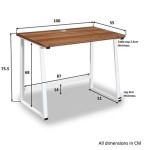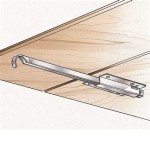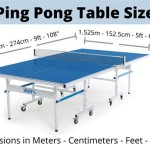Creating a Thriving DIY Raised Vegetable Garden Box
Embarking on a vegetable gardening endeavor can be both rewarding and fulfilling. While in-ground gardening is prevalent, raised garden beds offer a multitude of advantages, including improved drainage, extended growing seasons, and reduced weeding. Whether you're an experienced gardener or embarking on your first venture, this guide will empower you to create a thriving DIY raised vegetable garden box.
Materials and Design Considerations
The materials you choose for your raised bed will significantly impact its durability and longevity. Consider the following options:
- Wood: Cedar, redwood, and cypress are naturally rot-resistant, making them excellent choices for raised beds. However, pressure-treated lumber is recommended for ground contact due to its resistance to decay.
- Composites: Made from a blend of recycled materials and wood fibers, composites are durable, low-maintenance, and resistant to rot.
- Metal: Galvanized steel and aluminum are rust-resistant and strong options, but they can be more expensive.
- Concrete blocks: Concrete blocks are a cost-effective and sturdy option, but they require mortar for assembly.
The size and shape of your raised bed will depend on the available space and your gardening needs. Opt for a size that allows for comfortable access and provides ample growing area.
Location and Site Preparation
Selecting an appropriate location is crucial for a successful raised bed. Choose a site that receives plenty of sunlight (at least 6 hours per day) and has well-drained soil. Avoid areas with excessive shade or poor drainage.
Before setting up your raised bed, clear the area of any existing vegetation or debris. Remove the top layer of soil (approximately 6-8 inches) to create a level surface.
Construction Process
Once you have gathered the necessary materials and prepared the site, you can begin constructing your raised bed:
- Assemble the frame: Cut the side panels and end pieces to the desired height and length. Assemble the frame using screws or bolts.
- Install the liner: To prevent soil loss and contamination, line the interior of the bed with landscaping fabric or heavy-duty plastic.
- Fill with soil: Purchase high-quality raised bed soil or create your own by combining topsoil, compost, and manure.
- Create drainage holes: Drill small holes (approx. 1/2 inch in diameter) in the bottom of the bed to allow excess water to drain.
Planting and Maintenance
With your raised bed in place, you can begin planting your vegetables. Follow the recommended spacing guidelines for each variety and plant them at the appropriate depth.
Regular maintenance is essential to ensure a healthy garden: Water the plants as needed, fertilize them regularly, and remove any weeds or diseased plants.
Conclusion
Creating a DIY raised vegetable garden box is a rewarding project that can provide you with fresh, homegrown produce for years to come. By following the outlined steps and considering the essential aspects discussed, you can successfully establish a thriving garden that will enhance your outdoor space and contribute to a healthier lifestyle.

Build A Raised Garden Bed Step By Platt Hill Nursery Blog Advice

How To Build A Raised Bed Even If You Have No Idea Where Start Sunset

Our Diy Raised Garden Beds Chris Loves Julia

Raised Vegetable Garden With Compost Bins Lazy Guy Diy

28 Best Diy Raised Bed Garden Ideas Designs A Piece Of Rainbow
:max_bytes(150000):strip_icc()/September-Garden-4-27714c582b0d4ceaad95c9c24aaac9d9-25fe181085014f4381c4323f8ff30f3f.jpg?strip=all)
31 Easy And Inexpensive Diy Raised Garden Bed Ideas

Easy Diy Raised Garden Bed Love Renovations

How To Build A Beautiful Raised Garden Bed In 5 Easy Steps

Diy A Raised Bed Vegetable Garden

Diy Raised Bed Garden Box Strong Beautiful Easy To Build
Related Posts








